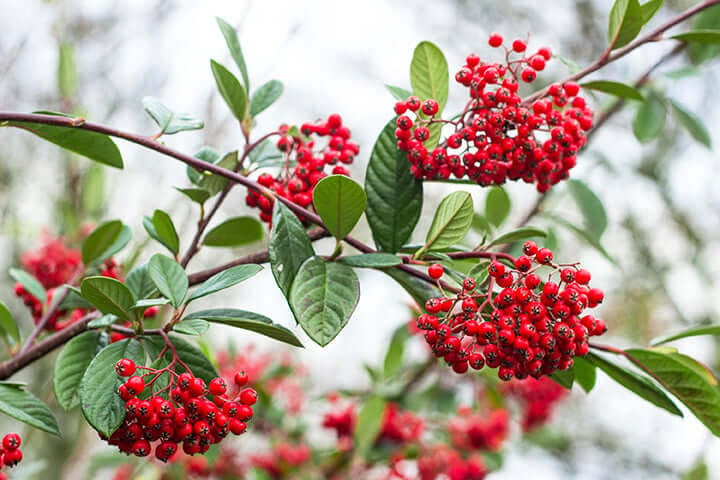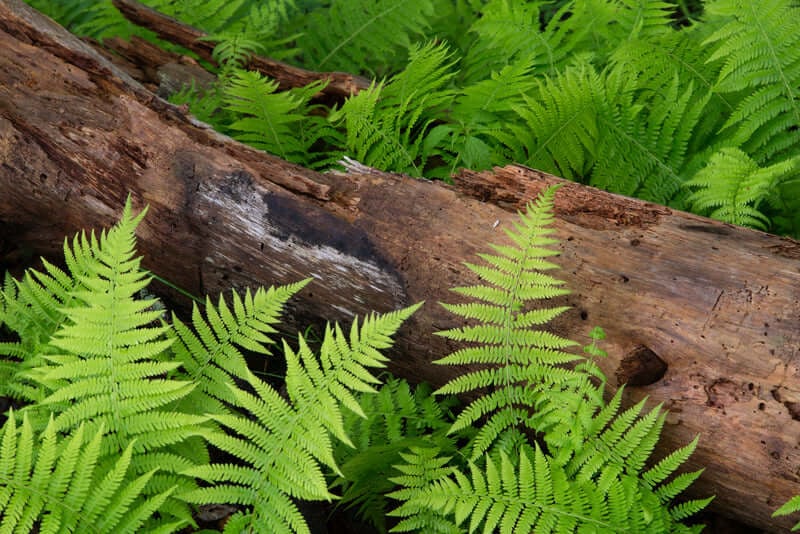No yard? No problem! As the Homegrown National Park movement tells us, even a plant in a pot set out on a balcony can feed a butterfly or some other creature. Every little bit helps. Here are some general tips on container gardening and some good plants to use in your pot.
- Begin your container garden by installing small plants into smaller pots. As the plant grows, repot and increase the plant size. Planting a small plant in a big plant makes it hard for the plant to thrive.
- Aim for a final pot of 14-16 inches in diameter for most flowers, a 20X20 inch pot for large plants, and a large pot of at least 24X24 inches for small trees.
- Choose pots that are at least 16 inches deep for perennials. Pots that are around 12 inches deep are best planted with native annuals or biennial plants that do not have a deep root system.
- You can grow several small plants in one big pot or several plants of one species in each pot. Remember that caterpillars eat plants, so you will need to grow enough to feed them until they pupate.
- Even though native plants growing in the ground can survive without supplemental watering once they are established, you will have to water them in pots. The smaller volume of soil dries out faster. In hot climates, you will have to water every day or even in the morning and evening, depending on the water needs of the plant.
- Match the potting soil in the pot to the kind of soil that is native to your area. Using regular potting soil for succulents will keep them too wet. Use a mix for succulents that drains well. Plants that are used to rocky, poor soil may fail to thrive in rich potting mix. Don’t use soil you have taken from your yard, however, as it will compact too hard for water and nutrients to absorb and roots to penetrate.
- You can grow native vines in a container if you put something like a stake or trellis in the pot for them to climb on. The trellis is best installed when you first plant the vine, so you don’t have to disturb the roots later.
- If you live in a hot climate, plant some larger plants that can provide some afternoon shade to smaller, more delicate plants. The soil in a container gets hotter than the inground soil under the same conditions.
- Do not use pesticides on or around your native plants. Pesticides kill the good insects along with the bad.
- Native plants will not need as much fertilizer as non-native plants. However, they will need some because the potting mix in the pots runs out of nutrients and can’t replenish itself. Fertilizing monthly during the growing season with a fish emulsion mix is probably adequate for most plants. Do not fertilize plants that are dormant from the heat or during the winter cold.
- Planting native perennials gives you the best bang for your buck. Many will grow well in pots and come back year after year, saving your money.
- For your first container, pick three plants: one that blooms in the early summer, one that blooms in midsummer, and one that blooms in late summer. This will provide nectar and pollen to insects all summer.
- Protect your containers from the winter cold. If they die back, cover the soil with 3-4 inches of leaf litter to keep them warm. If the plants are not dormant, you will need to bring them inside for a bad cold spell.
- Containers may be of almost any substance. Clay pots, plastic pots, ceramic pots, wood pots, empty cat litter buckets, and five gallon buckets all work as long as they have drainage holes. You will need to drill several ¼ inch holes in the bottom of buckets or pots without drainage holes. Do not use containers that have held toxic substances.
- Consider how big a plant will get when choosing a pot. A shallow pot will turn over in the wind because it will get top heavy. You will have to anchor it to the ground so it cannot turn over. A very large container, by contrast, may be too heavy to move easily. Place it on a square with wheels on it so you can move it as needed.
- Over time, a white crust may occur on the top of the soil in your containers. This is salt and must be flushed out as soon as you notice it or the plant will die. If the pot is still small enough, put it in the sink or bathtub and run the water in it until the crust is washed away. Let drain in the sink for 15 minutes or so before you try to move it. For larger pots, use the garden hose. Be mindful of what is below you when you do this outside. You don’t want water to rain down on your neighbor below you.
- Group plants by water requirements and sunlight requirements so all the plants in one pot need the same conditions.
Great Native Plants For Containers
The plants that are native to your area will vary depending on climate conditions. Here are examples of plants that grow well in containers and grow under a wide range of conditions.
Purple Coneflower
Purple coneflower grows from zone 4-9. It grows to be between 2-4 feet tall. The flowers are brownish in the center and spiky, surrounded by lavender petals that droop. The leaves are irregular and get smaller as they reach the top of the stem. They attract butterflies and hummingbirds.
Blanket Flower
Blanket Flower is a bright bold flower with a dark red center and petals that start out red and become yellow. It grows in zones 3-9. This 2-3 ft plant is a major component of prairies and wildflower meadows.
Cardinal Flower
Cardinal flowers grow up to six feet tall. They have stalks with dark green leaves that end in bright red flowers. This striking plant grows in zones 3-9. It has a pleasant fragrance and attracts hummingbirds.
Goldenrod
Goldenrod is a very tough plant with stalks of golden flowers that attract pollinators to them. It grows to about 4 feet in zones 3-8. Don’t plant it is you have allergies, though, as it will make you sneeze.
The Benefits of Container Gardening for Small Spaces
People without access to conventional yards or who only have restricted outdoor space can benefit from the adaptability and functionality of container gardening. Living in apartments or urban townhouses allows you to engage with nature through container gardening, which helps you grow fresh produce while enhancing your home's appearance. Varieties of plants, including colorful flowers and edible herbs and vegetables, can be grown by anyone who uses pots, planters, window boxes, and other creative vessels. Container gardening offers multiple benefits to individuals with limited outdoor planting space.
Container gardening lets you fully utilize every square inch of your available space. Traditional in-ground gardening often faces constraints due to soil conditions, yard dimensions, and local landscaping ordinances. Containers offer versatile placement options such as balconies, patios, window ledges, and even hanging positions from railings. Vertical growing techniques enable stacking multiple plants in tiered or shelved arrangements. Intelligent placement of trellises lets you grow tall climbing plants and efficiently utilize small or complex spaces. Container gardening enables you to develop a full and lively outdoor space with limited square footage available.
Container gardening provides you with the ability to manage plant growing conditions effectively. Container gardening allows you to fine-tune soil content, water distribution, and fertilizer concentration for each plant's specific requirements. Container gardening enables you to manage growing conditions because it allows you to adjust soil types when your outdoor space lacks perfect sunlight exposure. You can quickly relocate a container that requires more sunlight to a sunnier location, moving a scorched plant from full sun into a shaded area. Container gardening's convenience and mobility make it an attractive choice for new gardeners who want to try various plant types.
Container gardens are also easier to maintain. Potted plants are less vulnerable to weed invasion, and pests remain easier to monitor and control within confined spaces. Using small individual containers for your plants lets you detect early symptoms of pests and diseases more effectively. Careful monitoring of plants allows gardeners to minimize pesticide dependency while ensuring their gardens remain healthy. Watering efficiency increases because you can deliver moisture only to the necessary plant areas while leaving large sections of land dry.
Container gardening provides a rewarding way for people who want to enhance their diets with fresh produce grown at home. Several edible plants, including leafy greens and tomatoes alongside peppers and herbs, thrive in container gardens, producing substantial harvests. Growing your herbs can save money and enhance your meals while enjoying the satisfaction of harvesting fresh basil or rosemary from your balcony. Small-scale harvests from your garden can transform how you prepare food and change your relationship with what you eat.
Container gardening creates beautiful surroundings while improving personal well-being. Decorative planters, hanging baskets, and potted plants add visual appeal and pleasant scents, transforming bland or confined living spaces. Research has revealed that caring for plants helps to lower stress levels while enhancing our bond to nature, which serves as essential relief for people residing in cities or crowded areas. Container gardening allows people everywhere to experience gardening benefits with little financial commitment and minimal space requirements.
Read more

Watching birds, especially in the fall and winter, is a fun way to spend time. Many people put out bird feeders and fill them with food. Berries feed birds and other wildlife without the mess of ...

Woodland gardens come in many shapes and sizes. They are a peaceful place to sit in dappled shade during the hot summer and under bare branches in the winter. Here are some things to think about ...


